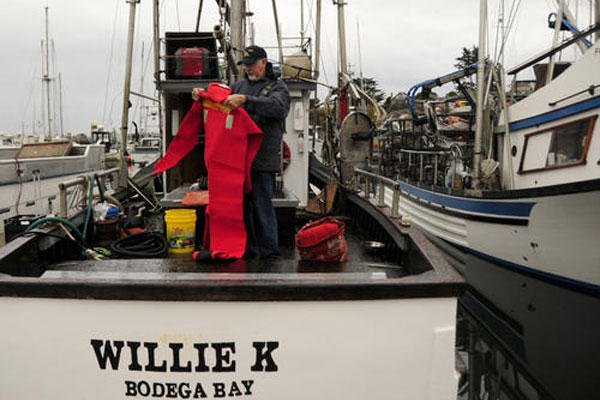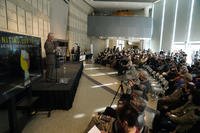Thanksgiving crab is a San Francisco tradition. The steamed, spidery-red crustaceans have a spot on the dining room table right next to that big, gobbling bird. Crab is a delicacy, but the fishermen who go out in the heavy-winter seas and catch it are anything but delicate. The Department of Labor lists fishing as the most dangerous jobs in the country, and the Coast Guard is working to reduce risk through a safety initiative called Operation Safe Crab.
More than 32 Coast Guard members spent the first week of November conducting free, mandatory safety checks on crab boats in nine ports from as far south as Monterey Bay to as far north as Crescent City. During these dock-side examinations, examiners – comprised of active duty, auxiliary and civilian members – ensured the lights, sound signals and emergency position indicating radio beacons worked properly and that there were survival suits for the entire crew and a life raft aboard. Additionally, they conduct training on the equipment’s usage and emergency procedures.
Manny Ramirez, a retired Coast Guard member, is in charge of organizing Safe Crab. He said the Coast Guard started conducting the voluntary exams 20 years ago, but this was the first year they became mandatory for crabbers operating more than three miles offshore.
“Our goal is to get the fishery off to safe start,” said Ramirez. “We hope that they catch a lot of crab, but we also want them to come home.”
Ramirez said that fishing crews battle fatigue and injury as they work long hours hauling and baiting crab pots. They also risk capsizing and sinking as they overload decks with heavy pots.
“Operation Safe Crab is about putting safety in fishermen’s minds and preventing accidents before they happen,” said Ramirez. He estimates the Coast Guard responds to between 60 and 80 search and rescues a year involving fishermen, including crabbers, and he wants to reduce that.
The California crab fleet is made up of less than 1,400 vessels and most are operated by two or three man crews. This year, there were 97 dock-side examinations completed and 58 decals issued to crabbers who met all of the federal safety standards. The decals are valid for two years; without one, crabbers face a higher risk of being boarded by Coast Guard law enforcement crews. That translates to less time fishing and money lost.
Ramirez said most fishermen appreciate the efforts of the Coast Guard.
“We don’t ask them to put anything arbitrary on their boats; it’s all stuff that will keep them alive and help us find them if they are lost,” he said.
Operation Safe Crab only occurs at the start of crabbing season. However, the Coast Guard is always looking to prevent accidents before they start. Knowledge and preparedness are proven powerful tools to protect life at sea.
The more prepared they are, the more likely they will return with pots full of a San Francisco tradition.




























